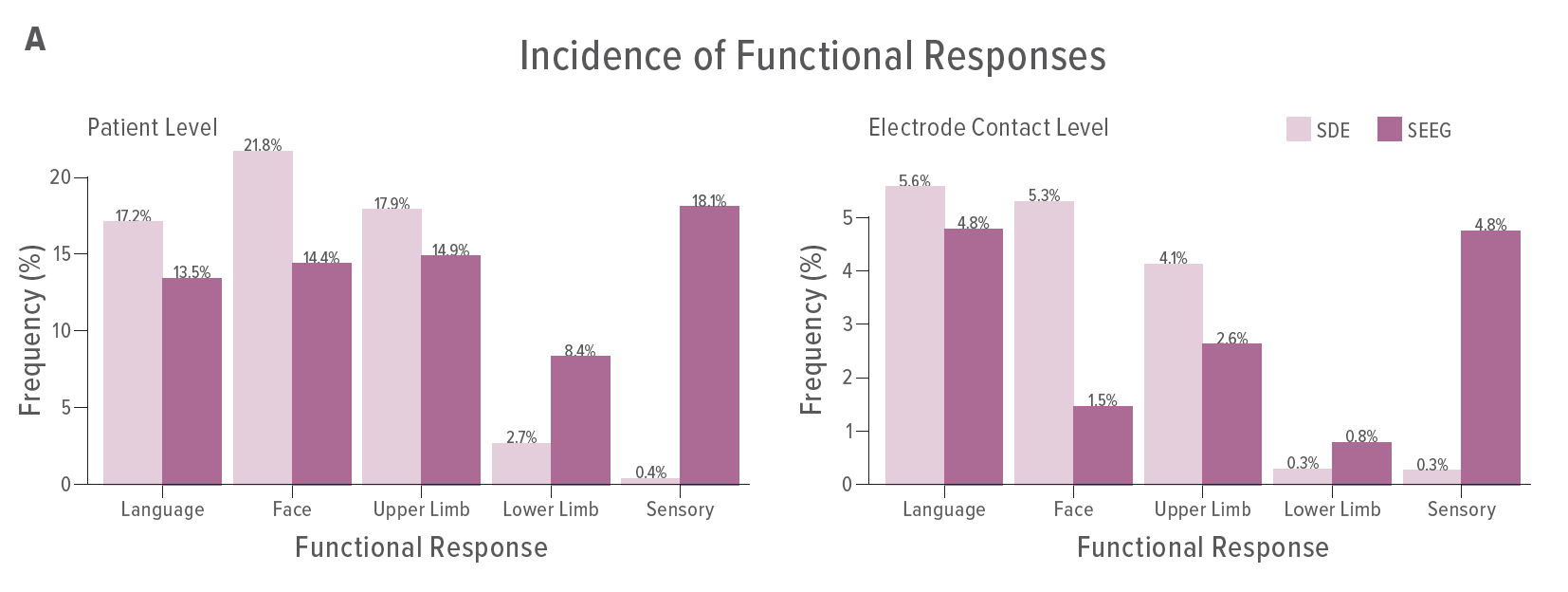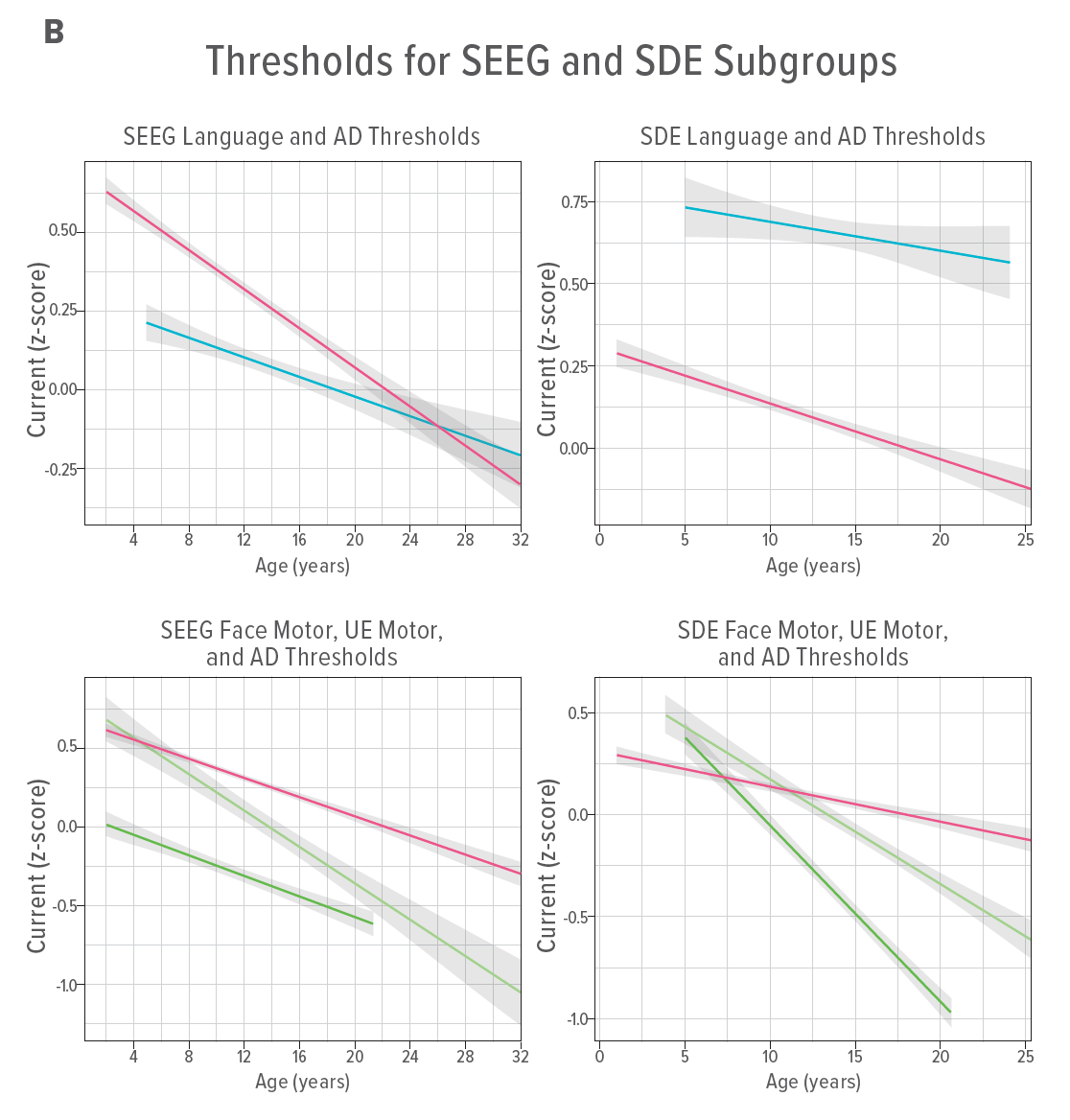SEEG for ESM May Offer Enhanced Safety, Validity and Versatility Compared to SDE
Research By: Gewalin Aungaroon, MD | Ravindra Arya, MD, DM
Post Date: March 17, 2023 | Publish Date: Mar. 17, 2023
Neurology | Top Scientific Achievement


Stereoelectroencephalography (SEEG) may offer a safer—and in some cases improved—alternative to the traditional use of subdural electrodes (SDE) for electrical stimulation mapping (ESM), according to a study led by first author Gewalin Aungaroon, MD, and corresponding author Ravindra Arya, MD, DM.
ESM using SDE is the clinical standard for functional localization before epilepsy surgery. This form of brain mapping helps identify seizure onset zones and functional networks, which informs the best surgical approach.
While some previous studies have suggested functional limitations of SEEG, this study evaluated a large dataset of 173 children to evaluate how SDE and SEEG measured sensory, motor, and speech/language functional responses. The research team also measured unwanted effects including after-discharges and ESM-induced seizures.
The investigators found that both methods offered comparable evaluations of language and motor regions, but SEEG demonstrated a heightened capacity for mapping sensory cortices. Additionally, patients receiving SEEG ESM had a lower incidence of after-discharges and ESM-induced seizures compared to SDE ESM.
“Intracranial electroencephalography has been an important pre-surgical tool in ensuring positive neurosurgical outcomes for patients with epilepsy,” Arya says. “While functional brain mapping was well-established for SDE, there were concerns about SEEG’s ability to define functional brain areas. This study demonstrated that SEEG is likely a viable, even safer, alternative for defining functional brain areas in these patients.”
The next steps for this research include evaluating postoperative functional outcomes in patients, which will shed greater light on the effectiveness of ESM with SDE and SEEG.

More 2023 Research Highlights
Chosen by the Division of Neurology
Peariso K, Arya R, Glauser T, et al. Early Clinical Variables Associated With Refractory Convulsive Status Epilepticus in Children. Neurology. 2023;101(5):e546-e557. doi:10.1212/WNL.0000000000207472
Gilbert DL, Dubow JS, Cunniff TM, Wanaski SP, Atkinson SD, Mahableshwarkar AR. Ecopipam for Tourette Syndrome: A Randomized Trial. Pediatrics. 2023;151(2):e2022059574. doi:10.1542/peds.2022-059574
Larsh TR, Huddleston DA, Horn PS, et al. From urges to tics in children with Tourette syndrome: associations with supplementary motor area GABA and right motor cortex physiology. Cereb Cortex. 2023;33(7):3922-3933. doi:10.1093/cercor/bhac316
Arya R, Frink C, Kargol C, et al. Neuropsychological outcomes after epilepsy surgery: A comparison of stereo electroencephalography and subdural electrodes. Eur J Neurol. 2023;30(10):2986-2998. doi:10.1111/ene.15929
Cohen AL, Kroeck MR, Wall J, et al. Tubers Affecting the Fusiform Face Area Are Associated with Autism Diagnosis. Ann Neurol. 2023;93(3):577-590. doi:10.1002/ana.26551
View more discoveries from 50 research divisions and areas
Return to the 2023 Research Annual Report main features
| Original title: | Comparing electrical stimulation functional mapping with subdural electrodes and stereoelectroencephalography |
| Published in: | Epilepsia |
| Publish date: | Mar. 17, 2023 |
Research By








